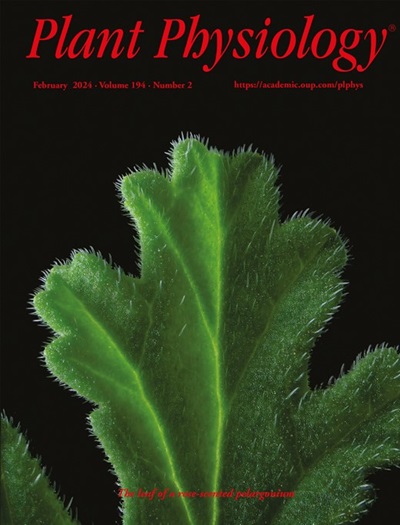The miR156k-SQUAMOSA PROMOTER-BINDING PROTEIN-LIKE2 module regulates the abscisic acid receptor PYL2 during citrus fruit ripening.
IF 6.9
1区 生物学
Q1 PLANT SCIENCES
引用次数: 0
Abstract
Members of the microRNA156 (miR156) family play essential roles in various biological processes, yet their involvement in regulating fruit ripening in citrus remains poorly understood. In this study, we determined that the miR156k- SQUAMOSA PROMOTER-BINDING PROTEIN-LIKE 2 (SPL2) module plays an important role in regulating citrus fruit ripening. Heterologous expression of csi-miR156k in Mini-Citrus Hongkong kumquat (Fortunella hindsii) significantly promoted fruit ripening, with the same phenotype observed when SPL2 was transiently silenced. Phenotypic analysis of F. hindsii transgenic lines revealed that SPL2 is the key target gene through which miR156k regulates fruit ripening in citrus. We used DNA affinity purification sequencing (DAP-Seq) and interaction assays to identify PYRABACTIN RESISTANCE LIKE 2 (PYL2) as the downstream target gene of SPL2, showing that PYL2 is negatively regulated by SPL2. Transient expression or repression of PYL2 in F. hindsii fruit greatly altered the duration of fruit color break. Moreover, screening of a yeast two-hybrid library revealed that caffeoyl CoA methyltransferase 7 (CCoAOMT7) directly interacts with SPL2. CCoAOMT7 recruits S-adenosyl-L-homocysteine hydrolase1 (SAHH1), leading to alterations in the DNA and histone methylation levels of the PYL2 promoter. Overall, this study reveals a previously uncharacterized mechanism by which the miR156k-SPL2 module regulates citrus fruit ripening by modulating PYL2 through epigenetic regulation.miR156k-SQUAMOSA启动子结合蛋白- like2模块在柑橘果实成熟过程中调控脱落酸受体PYL2。
microRNA156 (miR156)家族成员在各种生物过程中发挥重要作用,但它们在柑橘果实成熟调节中的作用仍然知之甚少。在本研究中,我们确定了miR156k- SQUAMOSA启动子结合蛋白样2 (SPL2)模块在柑橘果实成熟调控中起重要作用。异源表达si- mir156k在迷你柑橘香港金桔(Fortunella hindsii)中显著促进果实成熟,在短暂沉默SPL2时观察到相同的表型。表型分析表明,SPL2是miR156k调控柑橘果实成熟的关键靶基因。我们利用DNA亲和纯化测序(DAP-Seq)和相互作用分析鉴定出PYRABACTIN RESISTANCE LIKE 2 (PYL2)是SPL2的下游靶基因,表明PYL2受SPL2的负调控。PYL2的瞬时表达或抑制极大地改变了果色断裂的持续时间。此外,酵母双杂交文库的筛选表明,咖啡酰辅酶a甲基转移酶7 (CCoAOMT7)直接与SPL2相互作用。CCoAOMT7招募s -腺苷- l-同型半胱氨酸水解酶1 (sah1),导致PYL2启动子DNA和组蛋白甲基化水平的改变。总体而言,本研究揭示了miR156k-SPL2模块通过表观遗传调控PYL2调控柑橘果实成熟的一个未知机制。
本文章由计算机程序翻译,如有差异,请以英文原文为准。
求助全文
约1分钟内获得全文
求助全文
来源期刊

Plant Physiology
生物-植物科学
CiteScore
12.20
自引率
5.40%
发文量
535
审稿时长
2.3 months
期刊介绍:
Plant Physiology® is a distinguished and highly respected journal with a rich history dating back to its establishment in 1926. It stands as a leading international publication in the field of plant biology, covering a comprehensive range of topics from the molecular and structural aspects of plant life to systems biology and ecophysiology. Recognized as the most highly cited journal in plant sciences, Plant Physiology® is a testament to its commitment to excellence and the dissemination of groundbreaking research.
As the official publication of the American Society of Plant Biologists, Plant Physiology® upholds rigorous peer-review standards, ensuring that the scientific community receives the highest quality research. The journal releases 12 issues annually, providing a steady stream of new findings and insights to its readership.
 求助内容:
求助内容: 应助结果提醒方式:
应助结果提醒方式:


